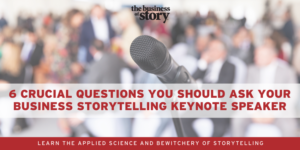15 years ago, I was taking the bullet train from Osaka to Tokyo, not to go sightseeing, but to throw myself into the lion’s den. A boardroom full of angry, roaring clients awaited me.
It was early in my career. I was working as a consultant in Japan, helping Japanese multinationals grow in English-speaking markets.
Earlier that day, the president of our ad partner firm had called me to tell me some bad news: our client had found the image we used in their ad in a different firm’s ad. This was a billion-dollar manufacturing company. With companies this big, these details matter.
The client was livid. Our ad partner instructed me to go and meet with the client personally — and fix this mess.
I was trembling the entire train ride there. I didn’t know if I’d leave the client’s office still a consultant. I was only three months into the business.
When I arrived in Tokyo, I walked straight to the client’s building. I checked in with the receptionist, sat in the lobby, and rehearsed my script. It felt like an eternity.
A few minutes later, the receptionist led me to the conference room. The powerful, seasoned businessmen towered over me like I was a sprout among oaks.
When the meeting started, I managed to pull myself together. I told them what happened, what we’ll do to fix it — and how much we value them and their business.
I didn’t give a presentation. I didn’t try and shift the blame. I took ownership of the mistake, and made a plan to remedy it.
They saw me — a young, inexperienced, disoriented consultant — come all that way and deliver it to them straight. Face to face. They respected my courage.
Because I didn’t beat around the bush, the mistake we made ended up building trust, not diminishing it.
I had saved the account and improved the relationship with the client. Our ad agency partner took notice. We went on to do multiple six-figures with the same partner over the next few years.

This was one of the defining moments of my young consulting career. It taught me a profound lesson about this business: it’s about people and relationships.
You can solve all types of problems by speaking with your clients face-to-face. It says a lot about your character when you’re willing to do that. And if you demonstrate an admirable character, they’ll trust you with their business.
This is one of the many stories I tell people who are building a consulting business.
It helps me “show” instead of “tell” these lessons I’ve learned the hard way, and want to share with others.
Storytelling is at the heart of what it means to “show” — and B2B professional service providers don’t do enough of it.
Why Are Consultants And Professionals Afraid To Tell Their Stories?
As consultants and professionals, we must not only tell stories, but tell our stories. 
It’s hard to remember standalone facts. But when you tell a story, you make it much easier for people to remember you, your business, and your services. This makes storytelling the most powerful method of communication.
For whatever reason, B2B professionals are afraid to tell their stories. They only want to show a professional face instead of sharing their challenges and vulnerabilities.
That’s a mistake. The more open you are — and the more you tell your story — the better.
In personal branding, you hear a lot about “authenticity” and “being your true self” these days. You don’t need to “try” and be authentic. Instead, tell your story. Tell it honestly. Telling your story is authenticity at its finest. It’s the type of authenticity that will help you build a business around the people you want to work with.
If you’re in B2B, you’re still a flawed, emotional human being selling to another flawed, emotional human being. Nobody’s perfect, and everyone knows that.
By sharing your story, you’re giving your clients a chance to resonate with you. You’re transgressing data and dollar signs to emotion. If you want people to know you, like you, and trust you, then storytelling is a prerequisite.
How We Did It: Sharing Our Journey
We invested a significant amount of time, energy, and money creating a story video to share our journey in starting Consulting Success.
Neither Sam, Consulting Success®’s co-founder, or I love being in front of the camera, sharing intimate details about our struggle. But we know there are other people out there like us. And we can’t attract them to our way of thinking and our business without sharing our authentic, true selves.
We’ve received heart-warming feedback about the video. It helps people “get” us — what we’re about, what we do, and what we want to help our clients achieve.
I’m sure potential clients watch the video and think “these guys aren’t for me.” And that’s OK. A unique story — just like a unique business — has a distinct point of view. A distinct point of view isn’t for everyone. But it is for the customers and clients you want to attract.
Sharing our story has built a connection with people that mere information cannot mimic.
B2B Storytelling Examples
Entrepreneurs and leaders you respect and follow aren’t afraid of being vulnerable. They tell their stories openly and frequently — and are comfortable being themselves in business.
Gary Vaynerchuk will be the first to tell you he wasn’t cut out for school. Instead of studying for history class, he was making thousands a weekend selling baseball cards. Instead of taking an MBA program, he spent years working at his father’s liquor store. He speaks at a rapid pace and isn’t afraid to swear. That’s him. That’s his brand. Some people don’t like it — but millions do.
Sheryl Sandberg is another example of a business leader who is authentic and tells her story.
From marriage troubles to being asked if she was a “pom-pom girl” early in her career, she talks openly about who she is — and what helped her get to where she is now. She wrote a book about it, Lean In, where she encourages people to do the same. Be yourself, speak your truth, and act as though you weren’t afraid, even if you are.
It’s by acting out these lessons that she has earned a billion-dollar net worth.
Both Gary and Sherly might attract different audiences. But by telling their stories, they build the right type of audience — for them, and the businesses that they want to create. You can do the same.

Action Step: What’s Your Story?
What’s your story? How did you end up doing what you do now in your professional life? What were the biggest obstacles you’ve had to overcome?
I challenge you to share your story: the ups and downs, the failures, the wins, the emotions — all of it.
And don’t just share it with your friends. Share it on your website. Share it with your potential clients. Share it with your professional network.
You can share your story professionally. And when you do, you’ll move people — much more than another how-to guide or framework.
Michael Zipursky is the CEO of Consulting Success® and Coach to Consultants. He has advised organizations like Financial Times, Dow Jones, RBC, and helped Panasonic launch new products into global markets, but more importantly, he’s helped over 400 consultants from around the world in over 75 industries add 6 and 7 figures to their annual revenues. Over 35,000 consultants read his weekly consulting newsletter. Michael is also the author of the Amazon Best Sellers “The Elite Consulting Mind” and “Consulting Success®”, the book. You can get Michael’s latest book FREE here: ACT NOW: How successful consultants thrive during chaos and uncertainty.











